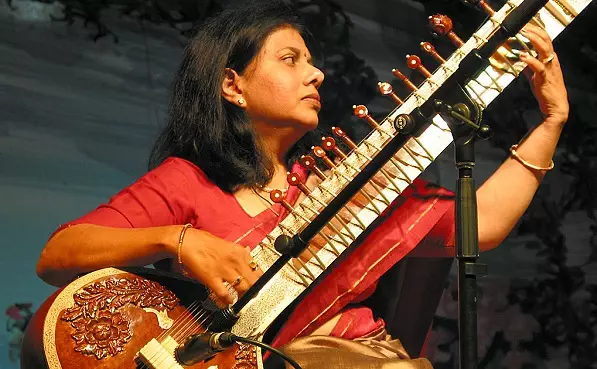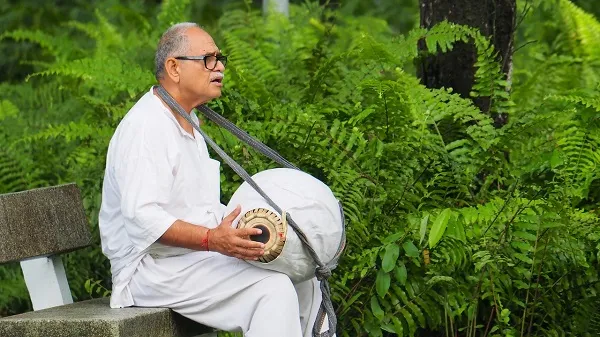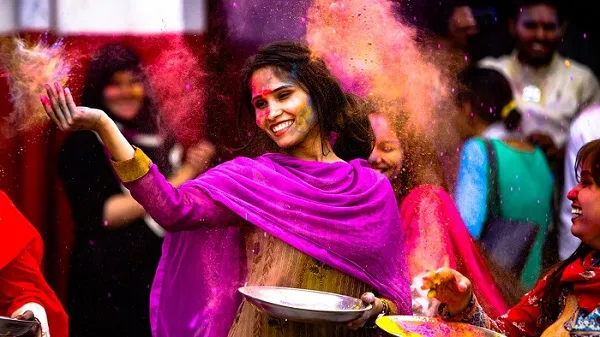We all know about the unique style of Indian music, which has billions of fans around the world, whether inside or outside of India. But have you ever known that the Indian music influence on Western music is as old as the Beatles?
In today’s article, I’ll give you a brief introduction to the types of Indian music out there, which varies according to period, genres, and regions. So without further ado, let’s dive in!
Indian Classical Music
1. Carnatic Music
Carnatic music originated from South India during the Vijayanagar Empire and can be traced back to as early as the 14th century!
Due to its southern origin, the music shows much less Persian and Asian influence and more Hindu origins than Hindustani music, despite being fairly close. Carnatic music is also one of the major characters of film music throughout the last century.
2. Hindustani Music
The Hindustani music is considered the music of the North. The music originated in the Vedic era with ancient religious hymns sung, usually by the one playing the music.
It was part of Carnatic music until it stood up as a type of its own during the 14th century due to Persian influences. Hindustani is highly represented in Bollywood, which makes it more familiar to the western world.
3. Light Classical Music
Under the category of Indian classical music, there is also a wide variety of styles that are fairly similar but milder.
These are known as “semi-classical” Indian music or “light classical” music, such as Chaiti, Natya Sangeet, Bhajan, Qawwali, Thumri, Kajri, Tappa, Dadra, and Ghazal.
Indian Folk Music
4. Lavani
Lavani is one of the music forms that are very popular in Maharashtra state in western India. Lavani is mainly a combination of dance and songs that are performed using Dholakis, which is an Indian percussion instrument.
The music has a quick tempo and powerful rhythm and has a huge influence on Marathi folk theatre. Anyone can play the music, but females are more likely to play them while wearing long sarees.
5. Bhangra and Modern Bhangra
Bhangra is a type of folk music that’s highly associated with the Punjab region and is still practiced among the Punjabi communities, whether inside of India or in Europe and North America.
The music genre originated among the British Punjabi in the late 1970s and found its way to Indian culture. Giddha is a popular female dance in Punjab that is usually practiced with the Bhangra music.
The rise of pop music and modern recording tools helped Balbir Singh Khanpur and Dalbir Singh (founders of the Bhujhangy Group) to record their type of music, helping it to find its way across different Punjabi communities.
They released their first hit in the early 1980s, and it was the first time ever that traditional Indian music was played along with modern western instruments.
Throughout the following years, the genre kept seeing developments, which produced the “Modern Bhangra”.
Keep in mind that Punjabi Bhangra and modern Bhangra are a little different from Punjabi folk music itself. Modern Bhangra’s typical song structure would usually include a single chorus with 4 verses and two instrumental bridge sections.
On the other hand, folk Punjabi music was much simpler and might include as little as one or two verses for the entire song.
6. Manipuri
Manipuri music descends from the traditions of Manipuri people in the foothills of the Himalayas and Indian-Burmian borders region. Manipuri music has deep religious roots and uses the Pena.
The Pena is an ancient musical instrument that’s considered a national symbol of the people of Manipur. It’s made from bamboo rods and the round shell of coconuts or gourds.
7. Bihu
Bihu refers to the festival of the new year of the Assam state in India. The festival is accompanied by special upbeat music that uses traditional types of wind instruments and drums that are a critical part of the celebrations, such as the buffalo-horn Pepa, dhol drums, and gogonas.
8. Borgeet
Borgeets are also from Assamese origins. They’re mainly songs that are derived from Indian classical music with religious lyrics associated with the Ekasarana Dharma.
Borgeets uses many instruments for the music, such as Khol and Nagara drums, Taal, and more.
9. Sufi Folk Rock
Sufi folk-rock is a relatively modern type of music in India but is slowly becoming a massive sensation across the country. It combines both elements of traditional devotional Sufi poetry and rhymes with modern hard rock music.
Sufi rock became a huge success in 2005 when an Indian musician topped the charts with a Sufi folk-rock song that became a first of its kind, followed by many Bollywood hits that cemented the genre within the neo-Indian culture.
10. Bengali Folk
Tagore or Rabindra Sangeet songs are pieces of music written and composed by Rabindranath Tagore, a popular Indian polymath, and Nobel prize winner.
He wrote over 2,200 songs in Bengali and is currently used in traditional folk music across the country as sources for inspiration.
The music has distinctive Bengali features, which are very well received in both India and Bangladesh.
11. Haryanvi
There are two main types of folk music in the Haryana state of India. The first one is the classic folk, which is usually songs about bravery, happiness, parting of lovers, and similar topics. The other type of music is the desi folk one, which also depicts similar topics in a slightly more upbeat tempo.
Both types of folk music use traditional Indian musical instruments, such as Dhol and Nagara drums, Mandar, Bansi, Khartal, Shehnai, Narsinga, and more.
12. Dandiya
Dandiya, also known as Raas, is a form of dance performed with sticks in the festival of Navaratri.
It is popular in the Gujarati culture and is mainly practiced within the state of Gujarat, but can also be found in Rajasthan and Marwar regions.
The socio-religious folk music uses traditional Indian music instruments, which are mainly drums, such as Dhols, Dhoklas, and Tabla.
13. Hadrami Marfa
Marfa music was introduced to India in the 18th century by the Siddi community of East Africa that lived in Hyderabad State.
The Hadrami music is a form of celebratory music that’s highly influenced by the Hadramawt region in Yemen. It’s characterized for its high tempo and celebratory rhythm and uses Marfas, Dhols, sticks, steel pots, Daff, and Thapi wooden strips for music.
14. Uttarakhandi
Folk music in the Uttarakhand region is intertwined with songs and ballads about the manners and social legacy that people in the Himalayas live by.
They use special melodic instruments, such as Dhols, Hudka, Ransingha, Dholaki, Daur, Thali, Bhankora, Damoun, Tutarri, and Masak Baja for playing the music.
15. Mizo
Mizo music became a part of Indian folk culture in 1,300 and 1,400 CE during the settlement of Thantlang in Burma.
Back then, the music was mainly chanting for war and hunting, as well as some cradle songs known as “Nau Awih Hla”.
The music is characteristic for its flow when compared to the folk songs of the Thantlang region. It also combines more elements of vocal singing, flute, and percussion with drums and gongs.
16. Kalbelia of Rajasthan
Rajasthan has one of the most iconic music and dance styles in India, which is Kalbeila’s cultural rituals. Their songs and dances are a marker of the tribe’s identity and representative of their pride.
The music is usually played by male participants while women usually dance to the music. The dances and songs are made to design the movement of a serpent.
A wide variety of Indian musical instruments are used in the celebrations, such as the Pungi, which is the traditional wind instrument Indian snake charmers use.
They also used multiple percussion instruments, including the Dholak, Khuralio, Khanjari, Dafli, and more. Most of the songs are based on ballads and stories taken from Indian mythology and folklore.
In 2010, UNESCO announced the music and dances of Rajasthan as a part of its Intangible Heritage List.
Other Types of Indian Music
17. Indian Pop Music
Although Indians are known to embrace their culture, Pop music is becoming the most popular genre across the nation because of Bollywood movies.
The Indian adaptation of Pop music is all about combining modern beats from all over the world with a blend of Indian classical and folk music.
18. Indian Dance Music
Indians, especially the youth, are huge fans of electronic dance music (EDM). Indians usually call it “DJ music”, and it’s usually based on popular Indian movies and Pop music songs.
Indian Dance music often combines elements of classical and folk Indian music with western EDM, creating something truly unique!
19. Raga Rock
Raga Rock is the Indian adaptation of Rock music. It shows a strong Indian characteristic not only by including elements from traditional Indian instruments but also by Indian musical construction and beat.
Raga Rock was introduced when many western rock groups used Indian classical music as an influence for their music, which was popular during the late 60s, especially by the Beatles.











